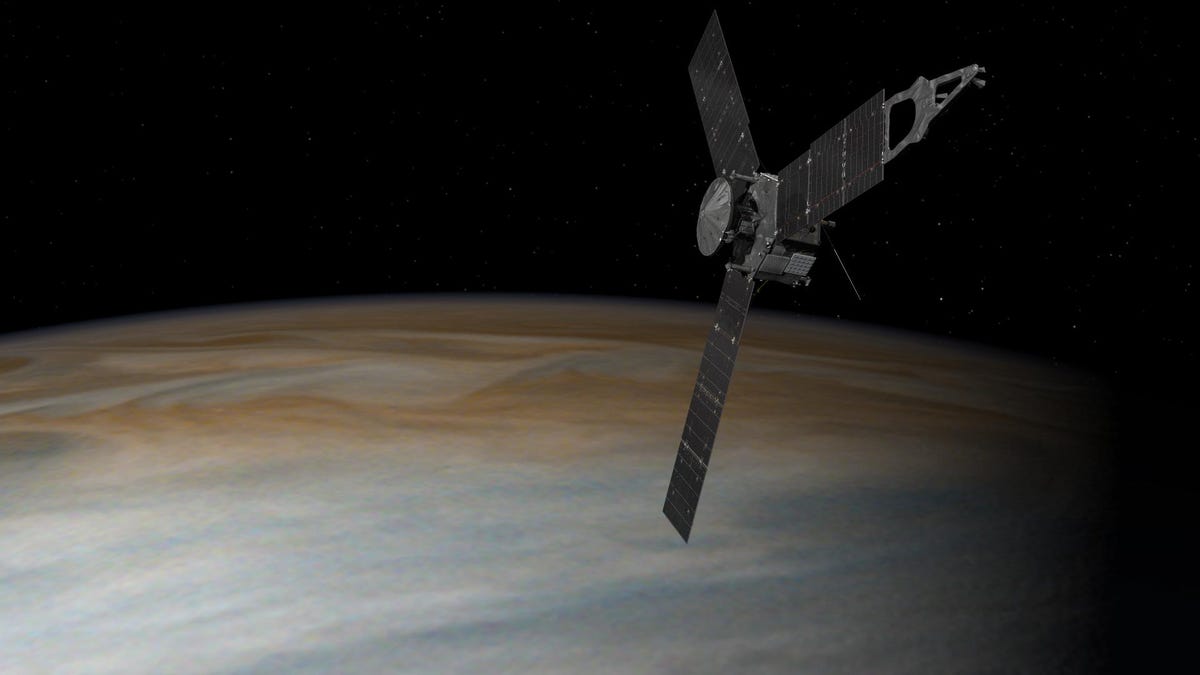The sounds of Juno approaching Jupiter are totally spooky
The Juno spacecraft has crossed into the magnetic field of Jupiter. NASA's soundtrack of the moment is out of this world.

The new data on Jupiter keeps getting weirder and more wonderful as NASA's Juno spacecraft approaches the massive planet to begin orbiting it on Monday.
The solar-powered probe, which began its journey in 2011, has already been collecting data on the solar wind and more. In the video below, data from the moment Juno crossed into Jupiter's magnetic field is presented as an audio stream.
Late last week, Juno crossed the bow shock, which NASA describes as analogous to a sonic boom on Earth. It's the threshold where the solar wind (basically energized particles thrown off into space by the sun) begins to be affected by the planet's powerful magnetosphere. Even more eerie is the sound of the spacecraft passing the actual boundary between the magnetic fields of the sun and Jupiter.
"We've just crossed the boundary into Jupiter's home turf," said Juno principal investigator Scott Bolton, of Southwest Research Institute, in a news release. "We're closing in fast on the planet itself and already gaining valuable data."
The sounds of space tend to be odd, as we've learned from Rosetta and Voyager previously.
Part of the reason these new sounds of crossing that border are so dramatic is that Jupiter's magnetosphere is considered the largest structure in the solar system, according to NASA. Yes, that means the planet's magnetic field is even larger than that of the sun's. You definitely don't want to put your credit cards or hard drives anywhere near the thing if you value your data. Presumably, NASA has figured out a way to shield Juno's components from it.
"If Jupiter's magnetosphere glowed in visible light, it would be twice the size of the full moon as seen from Earth," says the University of Iowa's William Kurth, lead co-investigator for the Juno's Waves investigation.
Scientists report that the border region between the domains of Jupiter and the sun has been more complex than expected, with all sorts of weird signatures coming from different instruments on board Juno.
"This unusual boundary structure will itself be the subject of scientific investigation," Barry Mauk said. Mauk heads the team behind the Juno instrument with the best acronym of all time: the Jupiter Energetic-Particle Detector Instrument, or JEDI.
As if you couldn't tell from recent shots of the gas giant in infrared or with its dazzling auroras, our view of Jupiter is about to get a whole lot more awesome.

